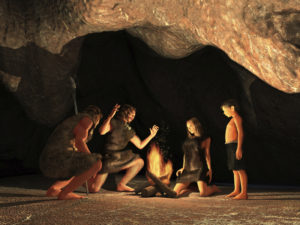Our interviews are not like any others you have seen.
The first obvious difference you will notice is that the respondent is relaxed and leaning back in a chair with his eyes closed so that he can be totally immersed into reliving past experiences with as little distraction as possible.
Our methodology begins with directing respondents to important relevant experiences that have high levels of emotional intensity – they naturally choose these since they are the ones that “stick out” or come to mind spontaneously.

Once they are re-living that formative moment, we guide them deeply into what their senses registered at that time – what they see, hear, feel, smell, and taste.
This anchors them into the moment and the experience. We then maintain this picture in their mind’s eye by “re-evoking” the experience frequently as we explore first what they are sensing, then what goes through their mind about what they are sensing, and then how that makes them feel, and finally what it is about this experience that is making them feel the way they do.

Following this cycle of linking the experience through the chain allows us to explore the process that is going on in their minds emotionally. This helps us gradually map the emotional landscape they live in.

Recent research by Dr. Antonio Damasio has identified the areas of the entire brain that operate in tandem to create maps that accomplish this field that is how each individual makes decisions, often totally subconsciously.
At one time it used to be thought that only the higher-level brain structures were involved, but it now appears that it begins way down in the brain-stem. This is where the personal identity – the sense of self – is created by the interaction between various parts of the brain and the body as a whole.
The senses create the emotions, then the emotions create feelings, and then feelings operate in tandem with the conscious mind to finally make decisions.
Parallel contemporary work by Daniel Kahnemann takes the research of Dr. Damasio into a practical level to help understand the mechanisms of cognition and emotions that are at work in decision-making. In the link below there is a BBC story about researchers that were awarded a Nobel Prize in Economics for work that would normally be considered psychology. We certainly appreciate the combination. Sometimes people give us “funny” looks for talking about marketing concepts in relation to non-profits or social issues (even religion). But the tools and examples all tie in to the fundamental processes of how the mind works and how people make choices. It is why we never get bored in our work. (Well, there was that ONE time …)
Link to BBC article on cognitive research on decision making: https://www.bbc.com/news/science-environment-26258662
We at Emotional ConteXt incorporate this new research into to our decades of practical experience exploring human emotions and decision-making to synthesize an effective way to quickly create an overview of how people think, feel and act.
Since pre-historic times, storytelling has been used to communicate complex ideas and transmit them through generations. We explore individual stories of experiences to create an emotional landscape from this context.

From the context we can analyze unmet needs as well as strong attractors and elements that repel. These work together to create sometimes very complex dynamics that can seem totally irrational from a normal outside perspective.
We explore individual stories of personal experiences to create an emotional landscape from this context that allows us to understand wider groups
Humanity’s legacy of stories and storytelling is the most precious we have. All wisdom is in our stories and songs. A story is how we construct our experiences. – Doris Lessing
During the interview we watch for contradictions, strong emotional language, and other clues that we have learned to follow up on since they indicate that there is more at a deeper level we can probe.

